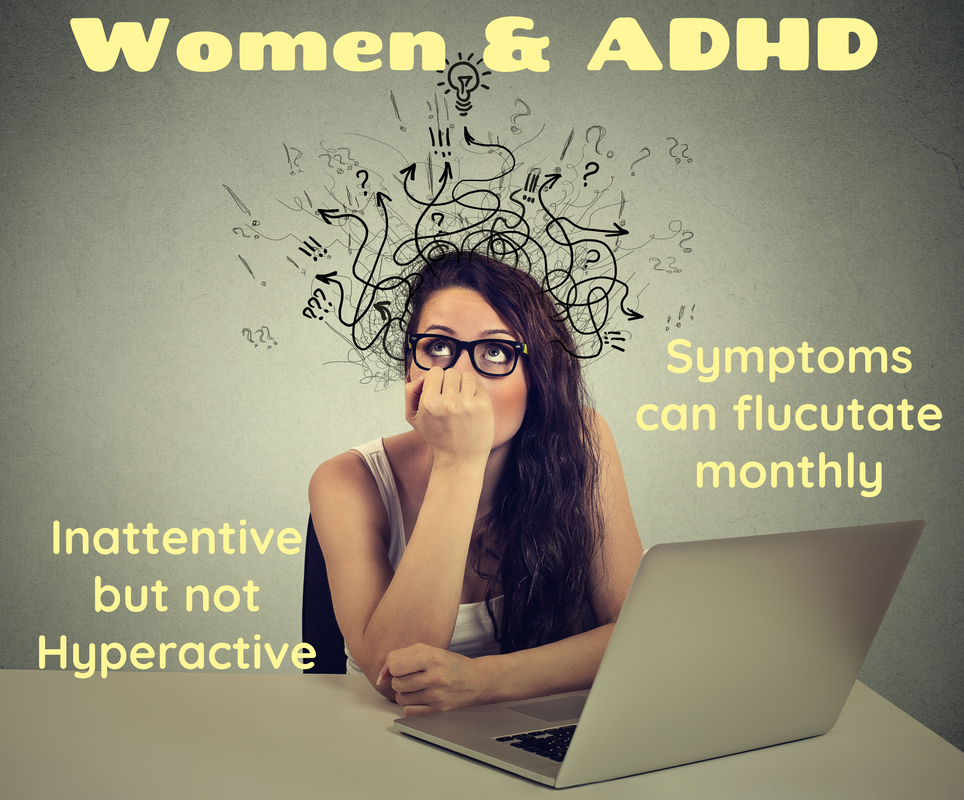|
Quick answer: the current DSM-5 diagnosis is ADHD - Attention Deficit/Hyperactivity Disorder. This diagnosis is given whether the individual has hyperactive symptoms or not.
Detailed answer (The ADHD Storytelling Answer): Once upon a time, around 1902 or so, there was a doctor who cared for children. We call these kinds of docs, pediatricians. Paediatrician if you want to spell it the fancy way. His name was Fred. He noticed that there were some children under his care who couldn’t control their behaviour the way other children could. Notice that I spelled behaviour the fancy way. Despite their lack of control, these children were pretty smart. Fred decided he needed to give their lack of behaviour control a description. He didn’t give the best description, at least not by today’s standards. He called it “an abnormal defect of moral control in children.” I don’t like Fred’s description. Do you? ADHD has nothing to do with morality. Thankfully, we recognize that today. ADHD is caused by the way your brain is built. This is why we now call it neuroatypical. ADHD brains, like mine, differ from what is considered typical. Many years after Fred’s horrible description, a bunch of other doctors decided they should come to an agreement about what to call different psychological disorders. So, they created the Diagnostic and Statistical Manual of Mental Disorders. V1. At this time, they didn’t think that ADHD/ADD and other forms of neuroatypicality fit into their narrow band of diagnostic characteristics. By the time they got around to creating their second version, they did recognize the disorder. They called it a “hyperkinetic reaction of childhood.” I don’t like this name any better than Fred’s. It sounds awful. It also only refers to childhood. What about me? I’m an adult with the disorder. Where do I fit in here? By 1980, these docs decided to give this disorder a better name. They called it Attention Deficit Disorder. Despite the fact that all the ADHD kids in the 80s were walking around slapping each other with snap bracelets, they didn’t think that hyperactivity was a significant component of the disorder. So, they created 2 subtypes: ADD with hyperactivity and ADD without hyperactivity. This name feels better to me. However, most of the kids, and some of the adults, I know have some form of hyperactivity. So, it still needed something. In the late ’80s, given all the slap bracelet welts suffered, the docs decided to change the name to ADHD - Attention Deficit/Hyperactivity Disorder. They still hadn’t perfected the name, though. Now, individuals who had no hyperactive symptoms were labeled as hyperactive. In the new millennium, the docs released the 4th edition of the DSM. This time, they included 3 subtypes in the diagnosis. The diagnosis, and the subtypes, remain the same today: ADHD - Attention Deficit/Hyperactivity Disorder
Or does it? Where does Executive Function fit into this diagnosis? But that’s a post for another time…
0 Comments
February 2024 - Update New research on hormones and their impact for women with ADHD keeps on coming! Researchers are now looking at both increases and decreases in estrogen and women's fluctuating symptoms. It now appears that increases in estrogen are implicated in increased risk-seeking and impulsive behaviours. Decreases in estrogen are now found to be impacting in the areas of executive function. Learn more by reading the ADDitude Magazine article here. Women are less likely to be diagnosed with ADHD. Our ADHD symptoms are often more socially acceptable, so we go undiagnosed. We may have been daydreamy when we were little, and this could have been dismissed as cute, wistful, creative, or flighty. Some of us were very talkative, which was typically understood as being hyper-social even if we lacked strong social skills. Frequently, females are less hyperactive than males, so our ADHD symptoms are not as clear to others as the boy who is getting out of his seat and disrupting the class.
While our ADHD traits are not as in-your-face as our male counterparts, they are still just as impactful. Being over-talkative will often get us in trouble. I lost count of how many times I saw “Tara needs to learn to listen and stop talking in class” on my report cards. Our brains can be full of running thoughts that we want to share. This can result in women experiencing difficulties sharing conversations with their peers and being accused of not listening to them. Our impulsivity means that we often blurt out our thoughts rather than consider how what we are thinking may be received by others. Daydreaming, or losing focus, means we have zoned out on big components of lectures or conversations. Women with ADHD often miss out on the finer details of a discussion as we can be distracted by our thoughts. We may not be as hyperactive, but we can be just as fidgety as our male counterparts. We are often unable to sit still and listen to conversations, lectures, or even watch TV when we are not interested in the program. Having a fidget tool or other type of movement can be helpful to keep us focused. Sitting in a rocking or hanging chair is particularly helpful to some women with ADHD. One of my ADHD friends is always working on crafts while she and her partner get lost in streaming their favourite programs. Our menstrual cycles also impact how we experience our ADHD symptoms. At certain points in our cycle, when our estrogen dips, our ADHD symptoms may become more severe. A booster of medication may help at these times. Women can also experience more significant ADHD symptoms as they approach menopause. Talk to your medicating physician about the possibility of a medication booster during the estrogen dip in your cycle. If you are interested in coaching for women with Attention Deficit/Hyperactivity Disorder, check out taracarmanfrench.com. |
Tara Carman-FrenchDirector, Certified ADHD & LD Coach Archives
June 2024
Categories
All
|
HoursM-F: 9:30 am - 4:30 pm
Other hours possible upon request |
Telephone1-888-239-1483
|
|



 RSS Feed
RSS Feed
